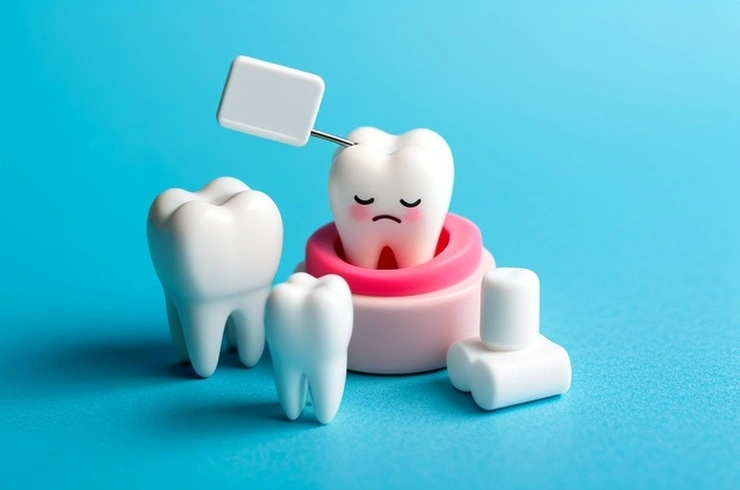
A subtle discomfort, a sharp pain, or an unusual sensitivity when you bite down – these are often the first whispers of a cavity. While it's tempting to wait and see if it goes away, ignoring these signals can lead to more significant problems and higher costs. Understanding the signs of tooth decay, the importance of preventive care, and timely treatment is paramount for maintaining both your oral health and your budget.
Cavities, scientifically known as dental caries, are tiny decayed areas or holes in your teeth. They are a direct result of bacterial buildup and the production of harmful acids in the mouth. Startlingly, statistics from the Centers for Disease Control and Prevention reveal that despite being preventable, a staggering 9 out of 10 adults over the age of 20 have experienced some degree of tooth decay. The unfortunate reality, as stated by the Mayo Clinic, is that these areas of decay are permanent once they form. Early-stage cavities can even go unnoticed, producing no immediate symptoms.
However, there's good news: cavities are treatable. The key is early detection. Catching a cavity in its nascent stages not only preserves your health and comfort but also protects your finances. Early intervention by your dentist can prevent the decay from progressing, thereby avoiding more complex and expensive treatments down the line.
The Mayo Clinic identifies three primary types of cavities based on their location:
Smooth surface cavities: These form on the flat sides of your teeth.
Root cavities: As the name suggests, these develop on the exposed roots of your teeth, commonly seen in individuals over 50.
Pit and fissure cavities: These are prevalent on the chewing surfaces of your molars and premolars.
It's also worth noting that cavities are highly prevalent among children.
While pain is a common indicator, cavities can manifest through other visual and sensory cues. According to the Mayo Clinic, be vigilant for the following symptoms of tooth decay:
Discoloration: Look for black, brown, or white spots on your tooth.
Unpleasant sensations: This can range from a sharp pain or twinges to a persistent dull toothache.
Pain while eating or biting: Discomfort when chewing food is a significant warning sign.
Visible holes: Even without discoloration or pain, a noticeable hole or pit in the tooth is a clear sign of a cavity.
Temperature sensitivity: Increased sensitivity to hot or cold foods and beverages.
Proactive oral care, even before you suspect a cavity, is crucial. Regular dental check-ups every six months are essential. During these visits, your dental professional—your dentist and dental hygienist—not only performs thorough cleanings but also meticulously monitors for any potential oral problems, ranging from tooth decay to oral cancer screenings, as highlighted by the Cleveland Clinic.
If you do suspect a cavity, self-treatment is not an option, and delaying a dental visit will only exacerbate the decay. The sooner you see your dentist, the higher the chances of catching the cavity in its early stages, which often translates to easier and more affordable treatment. Your dentist is your indispensable partner in oral health; schedule an appointment immediately if you experience any cavity symptoms.
The Mayo Clinic outlines the typical treatment process: your dentist will assess your mouth, gauge your pain level, and likely take X-rays to determine the extent of the decay. For very early-stage cavities, a simple fluoride treatment might suffice. However, as the decay progresses, more invasive interventions become necessary. These can include fillings to restore the tooth's structure, crowns to cover and protect a damaged tooth, or in severe cases of advanced decay, a root canal or even an extraction.
Being proactive and addressing a cavity promptly is the most effective strategy to halt its progression. A timely appointment with your dentist can truly make all the difference in preserving your smile and your overall health.
FAQ
What are the common signs of a cavity?
Common signs include sensitivity to hot, cold, or sweets, toothache, and a sticky feeling when biting down. You might also observe discoloration or a visible hole/pit in your tooth.
Is tooth sensitivity always a sign of a cavity?
Not necessarily. Tooth sensitivity often occurs when the dentin (the layer beneath the enamel) is irritated or exposed, leading to pain when exposed to extreme temperatures or pressure. This can be caused by gum recession or teeth grinding. However, persistent sensitivity warrants a dental checkup.
What should I do if I think I have cavity symptoms?
If you suspect cavity symptoms, schedule an appointment with your dental professional promptly. Cavities require professional attention to prevent further progression. Your dentist can perform an examination and take X-rays to diagnose and recommend the appropriate treatment, such as a filling.
Pro Tip
The content of the article is shared by netizens, please carefully identify it